-
 Bitcoin
Bitcoin $95,074.9515
-0.74% -
 Ethereum
Ethereum $2,665.6835
-4.54% -
 Tether USDt
Tether USDt $1.0002
0.02% -
 XRP
XRP $2.4494
-4.04% -
 BNB
BNB $638.0772
-2.37% -
 Solana
Solana $156.5859
-7.30% -
 USDC
USDC $1.0000
0.00% -
 Dogecoin
Dogecoin $0.2272
-6.74% -
 Cardano
Cardano $0.7239
-6.16% -
 TRON
TRON $0.2462
1.52% -
 Chainlink
Chainlink $16.3607
-7.20% -
 Stellar
Stellar $0.3180
-3.19% -
 Avalanche
Avalanche $23.3315
-6.29% -
 Sui
Sui $3.0562
-8.29% -
 Litecoin
Litecoin $122.6888
-4.43% -
 Hedera
Hedera $0.2182
4.13% -
 Toncoin
Toncoin $3.5994
-4.58% -
 UNUS SED LEO
UNUS SED LEO $9.2990
-4.68% -
 Shiba Inu
Shiba Inu $0.0...01456
-6.15% -
 MANTRA
MANTRA $8.3829
-1.28% -
 Polkadot
Polkadot $4.6810
-6.35% -
 Hyperliquid
Hyperliquid $21.1484
-10.37% -
 Bitcoin Cash
Bitcoin Cash $310.3752
-4.70% -
 Ethena USDe
Ethena USDe $1.0004
-0.01% -
 Bitget Token
Bitget Token $4.8227
-3.57% -
 Dai
Dai $0.9997
-0.02% -
 Uniswap
Uniswap $8.4145
-6.84% -
 Monero
Monero $233.6863
0.09% -
 NEAR Protocol
NEAR Protocol $3.2860
-2.67% -
 Pepe
Pepe $0.0...08713
-6.43%
What is the future of Ethereum?
Ethereum 2.0's transition to proof-of-stake enhances energy efficiency, increases security, and promotes fairer reward distribution.
Feb 24, 2025 at 08:18 pm
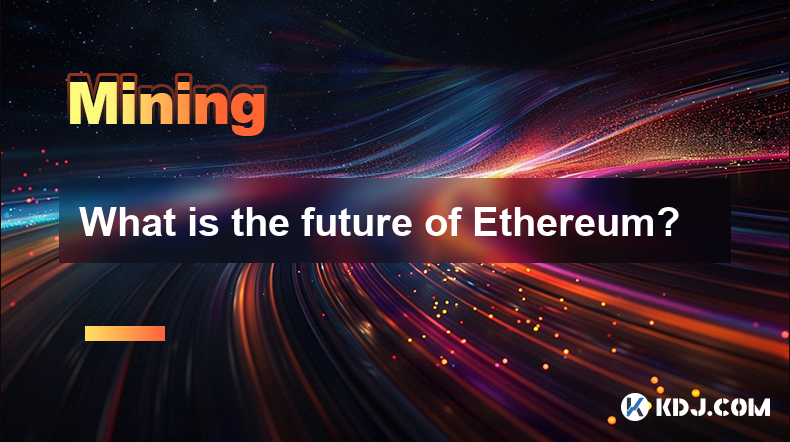
Key Points:
- Ethereum 2.0 Upgrade
- Layer-2 Solutions and Sidechains
- Proof-of-Stake Consensus
- Enterprise Adoption
- Decentralized Applications (dApps)
Article:
1. Ethereum 2.0 Upgrade
Ethereum 2.0, also known as Serenity, is a major upgrade to the Ethereum network aimed at addressing its scalability and security issues. Unveiled in 2019, Ethereum 2.0 will introduce significant changes:
- Proof-of-Stake Consensus: Replace the energy-intensive proof-of-work consensus mechanism with proof-of-stake, where validators stake their ETH to secure the network and earn rewards.
- Sharding: Divide the Ethereum network into 64 "shards," each processing a subset of transactions in parallel. This significantly increases transaction throughput.
- Beacon Chain: Introduce the Beacon Chain, a separate blockchain that manages staking and coordinates the shards.
The Ethereum 2.0 upgrade is expected to be completed in multiple phases, with the final release anticipated to occur in the coming years.
2. Layer-2 Solutions and Sidechains
Layer-2 solutions and sidechains are technologies that enhance the scalability of Ethereum without modifying the core protocol. Here's how they operate:
- Layer-2 Solutions: Operate on top of the Ethereum mainnet, offloading transactions to them. Examples include Optimistic Rollups and zk-Rollups, which significantly reduce gas fees and transaction times.
- Sidechains: Separate blockchains that run in parallel with Ethereum. They interact with Ethereum through bridges, allowing for faster transactions and lower costs.
3. Proof-of-Stake Consensus
Ethereum 2.0's transition to a proof-of-stake consensus mechanism has several advantages:
- Energy Efficiency: Proof-of-stake consumes significantly less electricity than proof-of-work, making Ethereum more environmentally friendly.
- Increased Security: The process of staking ETH for validation makes it more difficult for malicious actors to attack the network.
- Fairer Reward Distribution: Stakers receive rewards proportional to their stake, ensuring a fair distribution of incentives.
4. Enterprise Adoption
Ethereum is gaining traction in the enterprise space, where its decentralized features offer potential solutions in areas such as supply chain management, financial services, and healthcare:
- Smart Contracts: Ethereum's smart contracts allow for automated execution of agreements, reducing costs and increasing transparency.
- Decentralized Autonomous Organizations (DAOs): DAOs leverage Ethereum to operate as self-governing entities.
- Permissioned Blockchains: Enterprises can create private, permissioned blockchains based on Ethereum, offering the benefits of decentralization without jeopardizing data privacy.
5. Decentralized Applications (dApps)
Ethereum is a hub for decentralized applications (dApps) that leverage the blockchain's unique features. These dApps include:
- DeFi Services: Financial applications like decentralized exchanges, lending protocols, and yield farming platforms.
- NFTs: Non-fungible tokens that represent unique digital assets like artwork, collectibles, and virtual land.
- Gaming: Play-to-earn games that allow players to earn cryptocurrency for playing and contributing to the game's ecosystem.
FAQs:
What are the long-term price projections for ETH?
- Long-term price predictions for ETH vary widely, with some analysts expecting a significant increase in value as Ethereum 2.0 matures and adoption expands.
Is Ethereum a good investment?
- Ethereum's long-term potential as an investment depends on factors such as the success of Ethereum 2.0, the growth of the DeFi and dApp ecosystem, and adoption by enterprises and institutional investors.
When will Ethereum 2.0 be released?
- Ethereum 2.0 is expected to be fully released in the coming years, although specific timelines are subject to change. The upgrade is being implemented in phases, with various milestones already achieved.
What are the differences between Layer-1 and Layer-2 solutions?
- Layer-1 solutions modify the core Ethereum protocol to enhance scalability, while Layer-2 solutions operate on top of the mainnet, offloading transactions to increase throughput.
Disclaimer:info@kdj.com
The information provided is not trading advice. kdj.com does not assume any responsibility for any investments made based on the information provided in this article. Cryptocurrencies are highly volatile and it is highly recommended that you invest with caution after thorough research!
If you believe that the content used on this website infringes your copyright, please contact us immediately (info@kdj.com) and we will delete it promptly.
- Investors Shift Focus to Ozak AI’s Presale After Their Solana-Based Losses
- 2025-02-24 23:40:28
- Rexas Finance (RXS) – The Next 100x Altcoin With Real Utility That Could Make You a Millionaire
- 2025-02-24 23:40:28
- Cardano (ADA) Price Prediction Targets $1.50 as Presale Investors Focus on Remittix (RTX) Payments
- 2025-02-24 23:40:28
- Cardano (ADA) Market Analysis – Targeting $10 as DeFi Ecosystem Heats Up
- 2025-02-24 23:40:28
- Dogecoin's Future Uncertain: An In-Depth Analysis of Market Trends and Predictions
- 2025-02-24 23:40:28
- OX.FUN, a crypto derivatives exchange linked to the bankrupt Three Arrows Capital co-founders Su Zhu and Kyle Davies, is under fire following allegations of financial misconduct.
- 2025-02-24 23:40:28
Related knowledge

How to remotely manage Bitcoin mining machines?
Feb 24,2025 at 11:24pm
How to Remotely Manage Bitcoin Mining MachinesKey Points:Choose a remote management platformSet up your mining machines for remote accessUse a hardware wallet for added securityMonitor your mining activity and make adjustments as neededKeep your software up-to-date1. Choose a Remote Management PlatformThere are several remote management platforms that c...
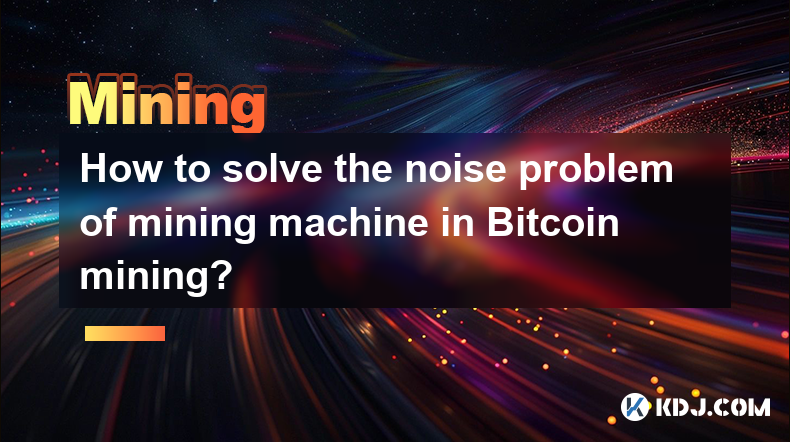
How to solve the noise problem of mining machine in Bitcoin mining?
Feb 24,2025 at 08:37pm
Key Points:Understand the root causes of noise generated by mining machinesImplement noise-dampening techniques to reduce sound levelsExplore alternative mining strategies to mitigate noise impactConsider professional consulting services for specialized expertiseProblem Analysis:Bitcoin mining operations generate significant noise due to the powerful co...
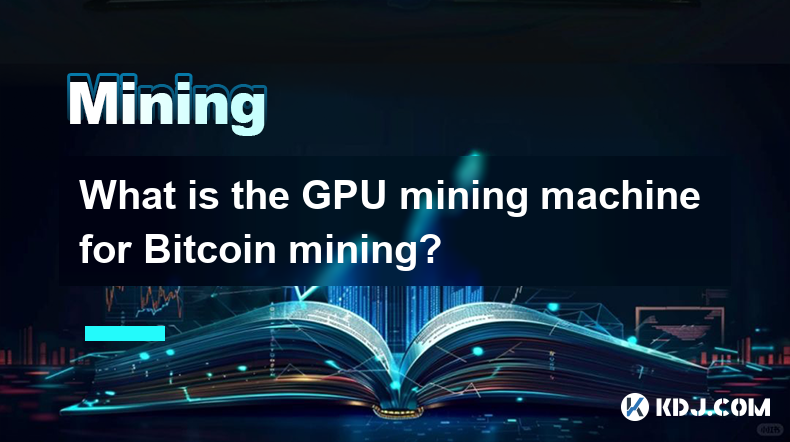
What is the GPU mining machine for Bitcoin mining?
Feb 24,2025 at 08:30pm
Key Points of Bitcoin GPU Mining MachineUnderstanding the Basics of Bitcoin MiningEssential Components of a GPU Mining RigSelecting the Right GPU for Bitcoin MiningBuilding and Configuring a GPU Mining RigJoining a Mining PoolMonitoring and Maintaining Your GPU Mining RigComprehensive Guide to GPU Mining Machines for Bitcoin Mining1. Understanding the B...

What is the mining pool for Bitcoin mining?
Feb 24,2025 at 09:54pm
Key Points:Understanding Mining PoolsBenefits of Mining in PoolsSelecting a Reputable Mining PoolFactors to Consider When Choosing a PoolRisks Associated with Mining PoolsAlternatives to Mining PoolsWhat is a Mining Pool for Bitcoin Mining?A mining pool is a collective of individual Bitcoin miners who combine their computing power to increase their chan...
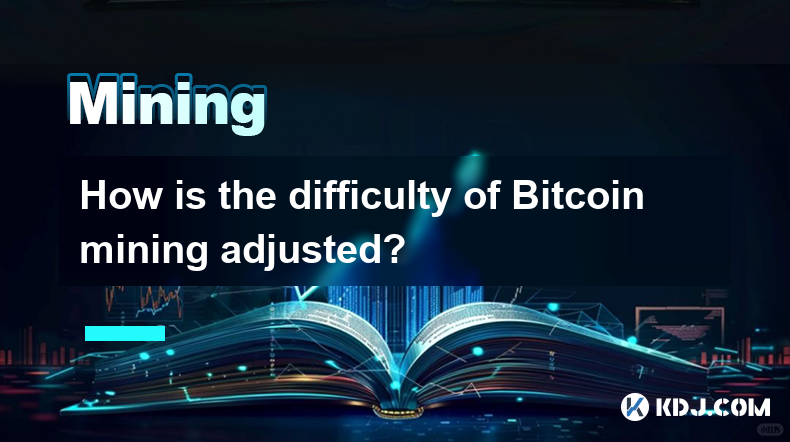
How is the difficulty of Bitcoin mining adjusted?
Feb 24,2025 at 10:01pm
Key Points:Adjustment mechanism: Bitcoin's mining difficulty adjusts every 2,016 blocks (approximately every two weeks) based on the time taken to mine the previous 2,016 blocks.Target block time: The target block time for Bitcoin is 10 minutes.Difficulty adjustment formula: The mining difficulty is adjusted using a formula that compares the actual aver...
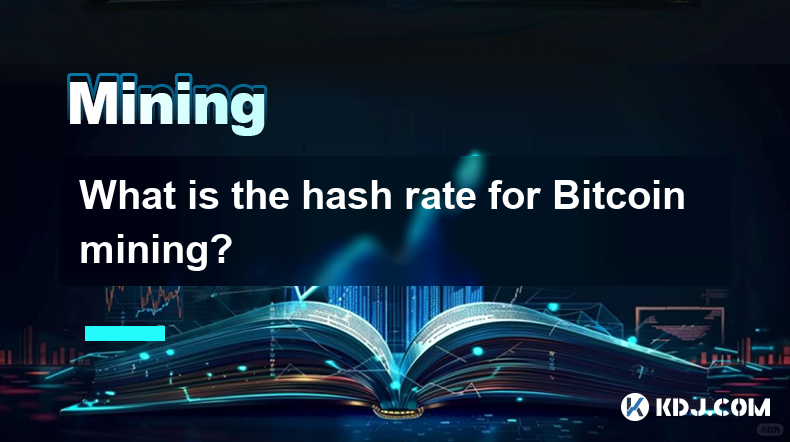
What is the hash rate for Bitcoin mining?
Feb 24,2025 at 07:13pm
Key Points:The hash rate measures the computational power dedicated to Bitcoin mining.A higher hash rate indicates a more secure network, making it difficult for malicious actors to compromise.Miners aim to solve complex mathematical puzzles to earn rewards in the form of Bitcoins.Specialized hardware, such as ASICs, is predominantly used in Bitcoin min...

How to remotely manage Bitcoin mining machines?
Feb 24,2025 at 11:24pm
How to Remotely Manage Bitcoin Mining MachinesKey Points:Choose a remote management platformSet up your mining machines for remote accessUse a hardware wallet for added securityMonitor your mining activity and make adjustments as neededKeep your software up-to-date1. Choose a Remote Management PlatformThere are several remote management platforms that c...

How to solve the noise problem of mining machine in Bitcoin mining?
Feb 24,2025 at 08:37pm
Key Points:Understand the root causes of noise generated by mining machinesImplement noise-dampening techniques to reduce sound levelsExplore alternative mining strategies to mitigate noise impactConsider professional consulting services for specialized expertiseProblem Analysis:Bitcoin mining operations generate significant noise due to the powerful co...

What is the GPU mining machine for Bitcoin mining?
Feb 24,2025 at 08:30pm
Key Points of Bitcoin GPU Mining MachineUnderstanding the Basics of Bitcoin MiningEssential Components of a GPU Mining RigSelecting the Right GPU for Bitcoin MiningBuilding and Configuring a GPU Mining RigJoining a Mining PoolMonitoring and Maintaining Your GPU Mining RigComprehensive Guide to GPU Mining Machines for Bitcoin Mining1. Understanding the B...

What is the mining pool for Bitcoin mining?
Feb 24,2025 at 09:54pm
Key Points:Understanding Mining PoolsBenefits of Mining in PoolsSelecting a Reputable Mining PoolFactors to Consider When Choosing a PoolRisks Associated with Mining PoolsAlternatives to Mining PoolsWhat is a Mining Pool for Bitcoin Mining?A mining pool is a collective of individual Bitcoin miners who combine their computing power to increase their chan...

How is the difficulty of Bitcoin mining adjusted?
Feb 24,2025 at 10:01pm
Key Points:Adjustment mechanism: Bitcoin's mining difficulty adjusts every 2,016 blocks (approximately every two weeks) based on the time taken to mine the previous 2,016 blocks.Target block time: The target block time for Bitcoin is 10 minutes.Difficulty adjustment formula: The mining difficulty is adjusted using a formula that compares the actual aver...

What is the hash rate for Bitcoin mining?
Feb 24,2025 at 07:13pm
Key Points:The hash rate measures the computational power dedicated to Bitcoin mining.A higher hash rate indicates a more secure network, making it difficult for malicious actors to compromise.Miners aim to solve complex mathematical puzzles to earn rewards in the form of Bitcoins.Specialized hardware, such as ASICs, is predominantly used in Bitcoin min...
See all articles

















































































